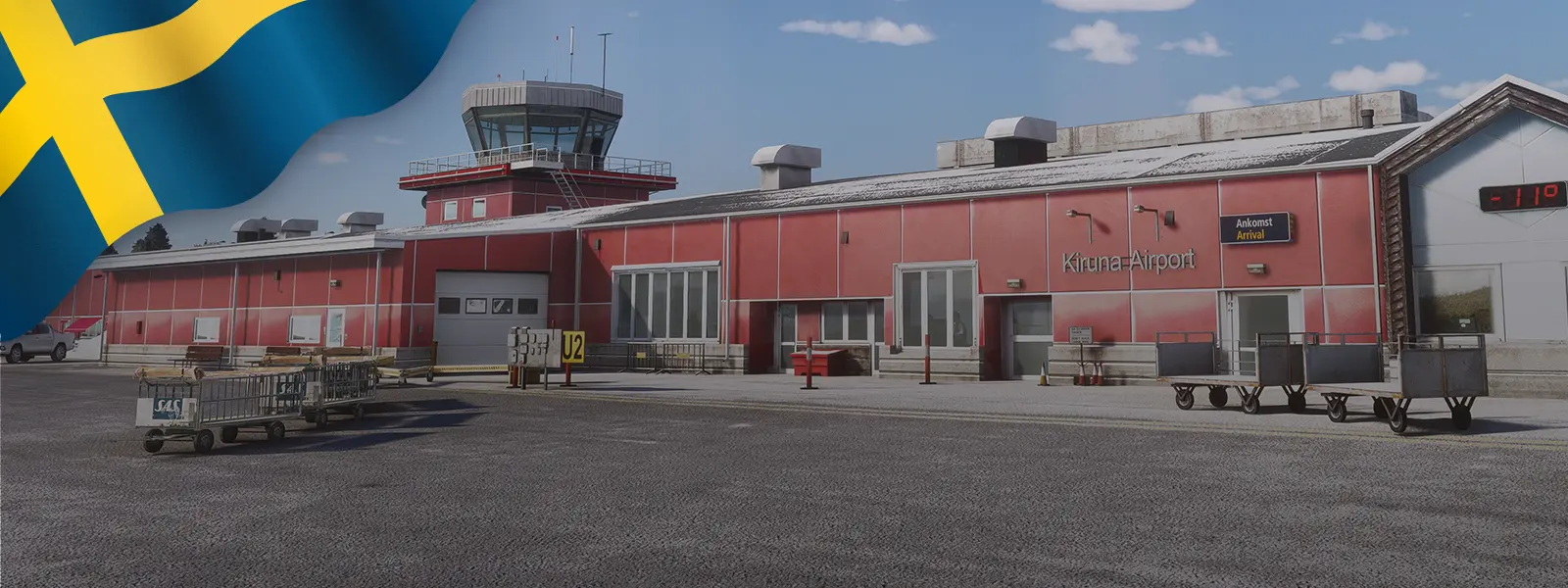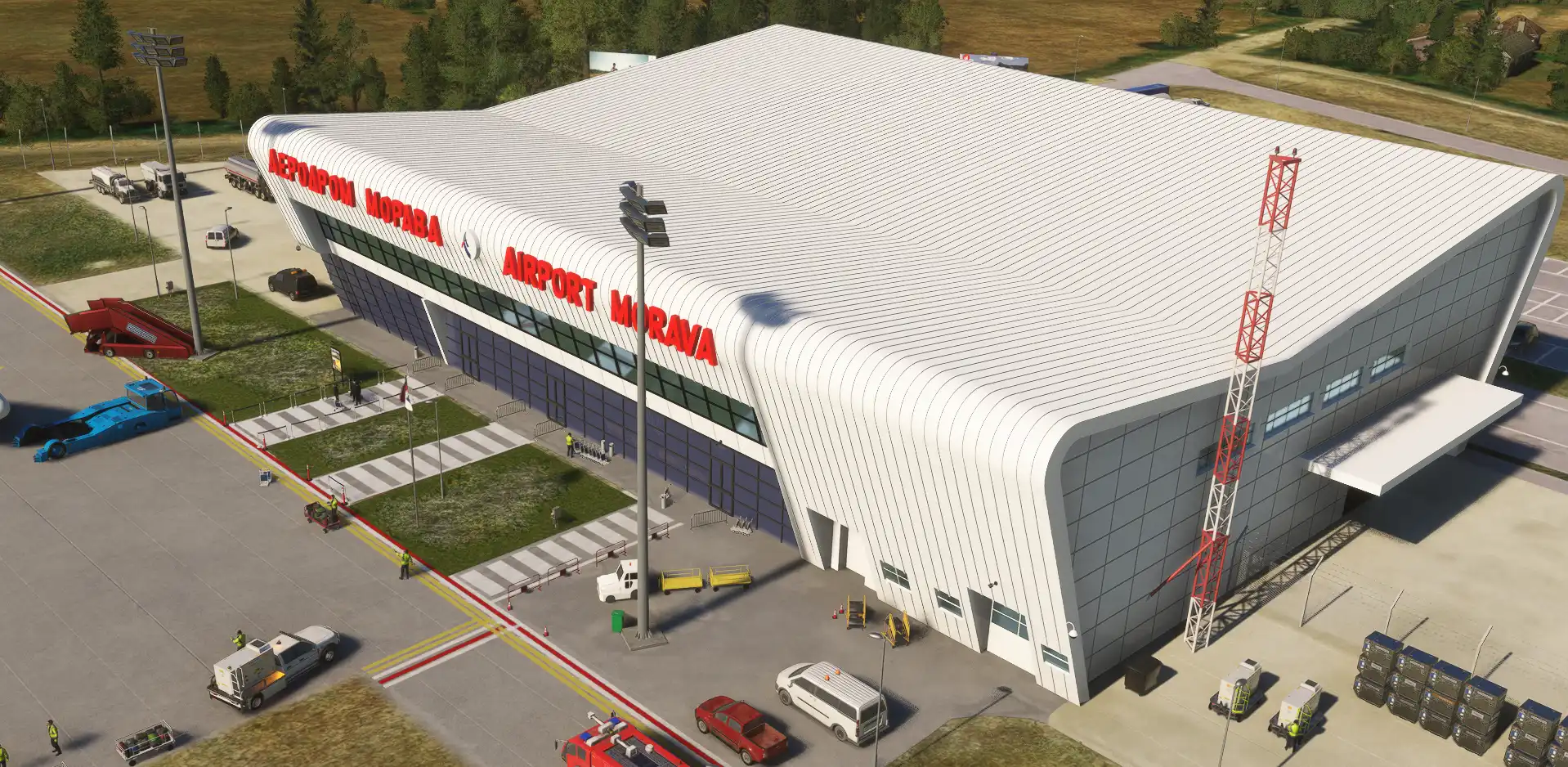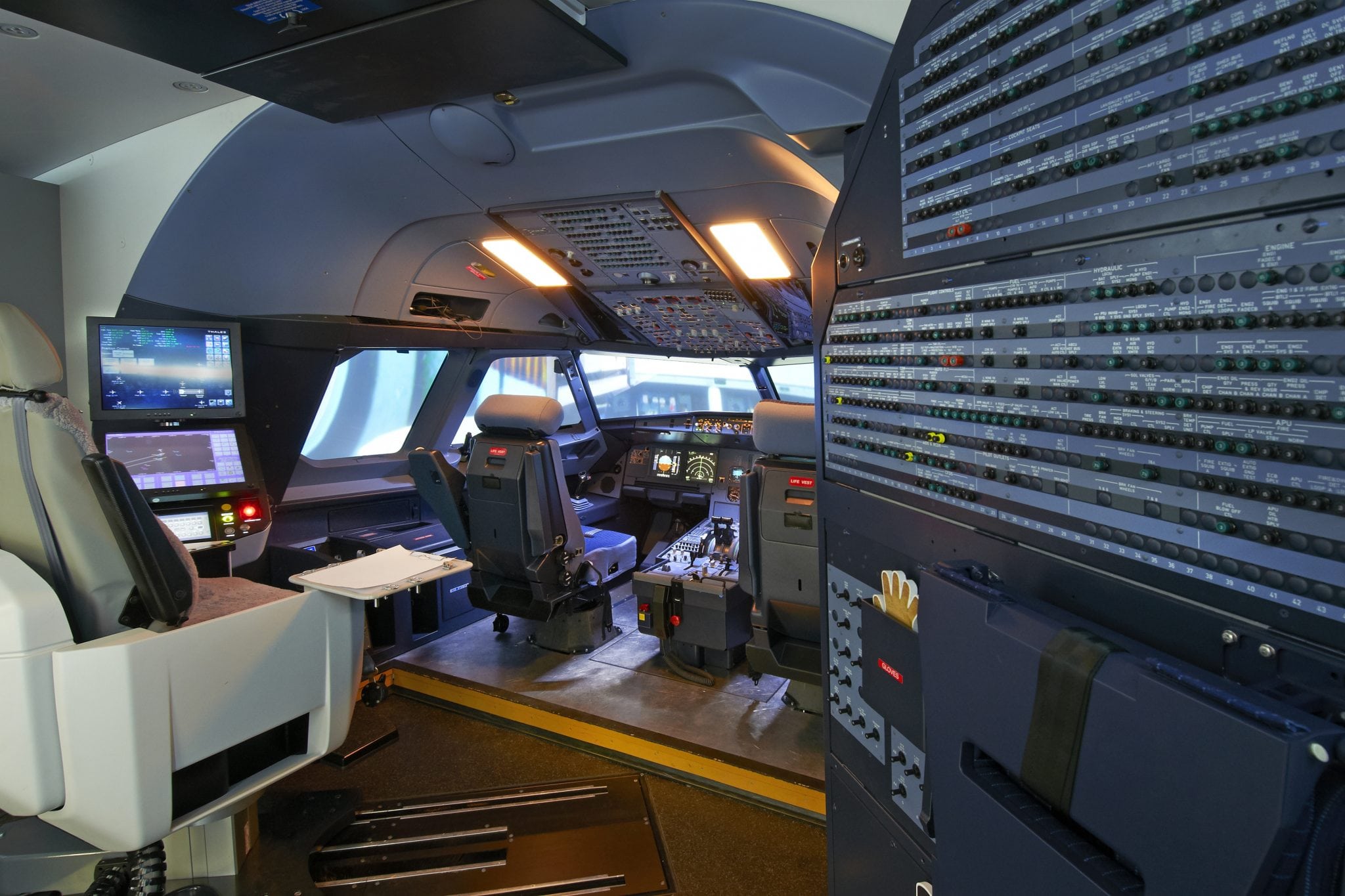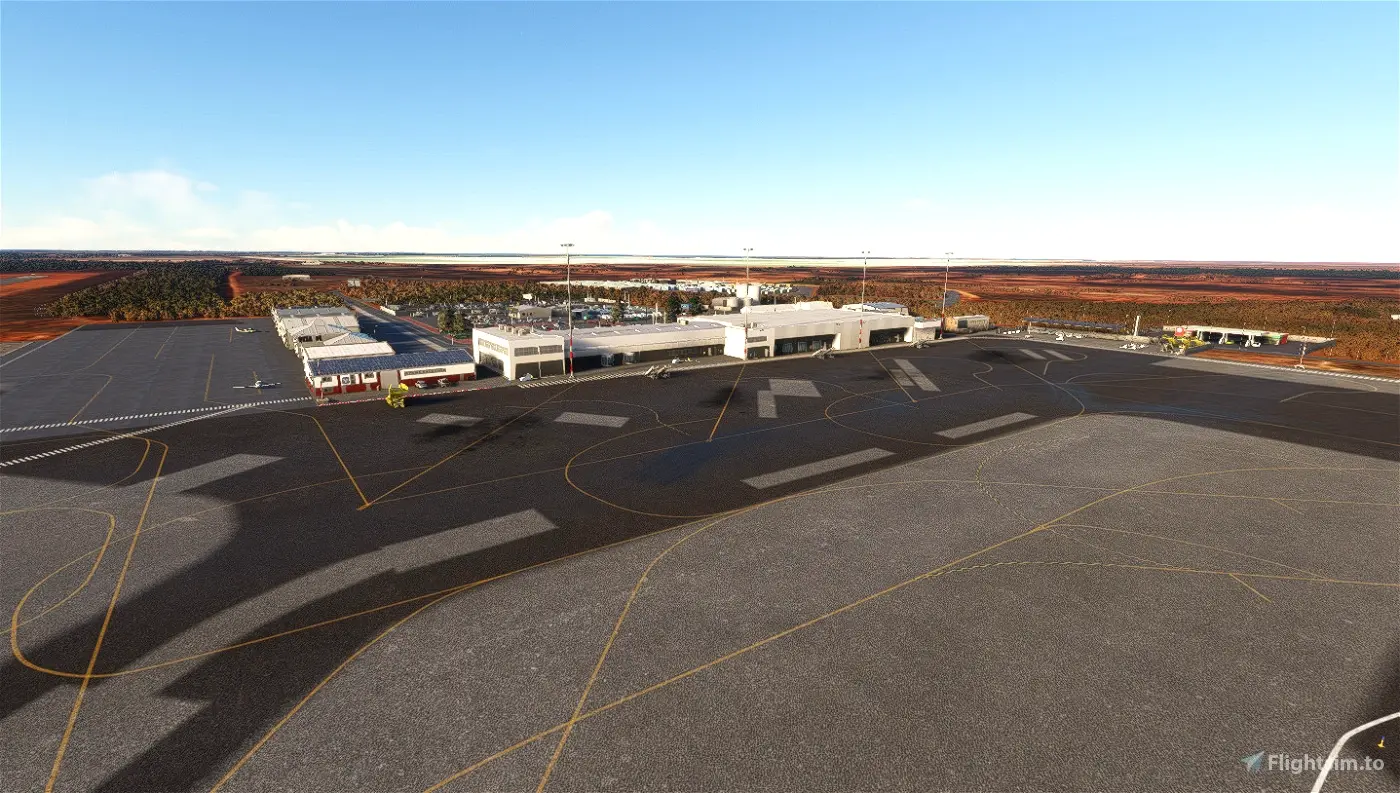Free 3D for Three: How FlightFactor’s A350 Model Ended Up as a Free Prepar3D Plane
May 13, 2020
FlightFactor, the ever dedicated X-Plane developer, has faced a conundrum over the past few days as we've uncovered that the group’s A350 model had been used in a freely distributed model available for FSX and Prepar3D. The aircraft has since been taken down.
It’s not often that a developer on the ESP-platform side of flight simulation is caught using assets created for X-Plane. Nonetheless, a few days ago, an up and coming freeware developer named Sergio A. Aguirre Díaz was discovered to be utilizing 3D models from the coveted freeware development group Project Airbus, payware development team Commercial Level Simulations (CLS), and in a surprising twist: X-Plane’s FlightFactor.
Dubbed “SAAD”, the group maintained a family of aircraft including the Airbus A350, A330neo and a forthcoming rendition of the A321neo. Over the past few days, the developer’s Facebook group has spiralled from conversation about the aircraft to accusations of theft following a message from another developer outing Aguirre Díaz for using his A321 model without permission. As the community later found out, this was not an isolated incident for SAAD.
Here's the story of how one freeware developer managed to copy three different aircraft models and release them as their own.
A 'SAAD' History
Late 2019 marked the first release in SAAD’s up and coming line of freeware Airbus models, in the form of an A350. Even at such an early juncture in the developer’s presence, some users noted the very short period of time between the first renders of the Airbus and it’s release just weeks later, though no further action was taken on the topic.
SAAD’s A350 was popular in Prepar3D freeware circles, with social media posts from the time hailing its excellent model, though with most ESP-platform freeware aircraft, merging the model with a more capable cockpit was required in order to use the Airbus to its fullest extent. Despite this, it continued to gain popularity in the latter half of the year.
But, on the inside at SAAD, it wasn’t going as well. An unnamed developer informed us of the conversations that took place between himself and Aguirre Díaz, saying that he cut a more novice figure in private messaging, asking questions below the level of a developer capable of creating his new A350.
This is where questions began to swirl surrounding SAAD’s A350. Reportedly a user questioned the legitimacy of the model on the group’s Facebook page, only for the post to be removed and the user banned. According to another group member, the developer then added this entry to their list of rules:

Regardless, users were unwaivering in support for the new developer and the accusations appear to have been swept under the rug.
Not soon after, SAAD unveiled a brand new A330neo model for all to enjoy, the timing and release proved to be a red flag towards veteran developers. Hiroshi Igami a POSKY/TDS developer reflected in a more recent social media post: “this development speed, isn’t it too fast?” Suspicions aroused but nothing came of it and nobody has shown an attempt to delve further.
The rapid announcement of a third aircraft, an A321neo, proved to be the final straw and marked the beginning of SAAD’s demise, though. Unlike the previous aircraft released under the brand, this time, users were quick to point out the striking resemblance of the model to Project Airbus - an established developer - and their rendition of the same aircraft. Soon enough, comparison images were made available of the A321’s wireframe model which all but confirmed SAAD’s copy-cat status. It was noted the only differences seen surrounded the aircraft’s nose, though these were minor at best.
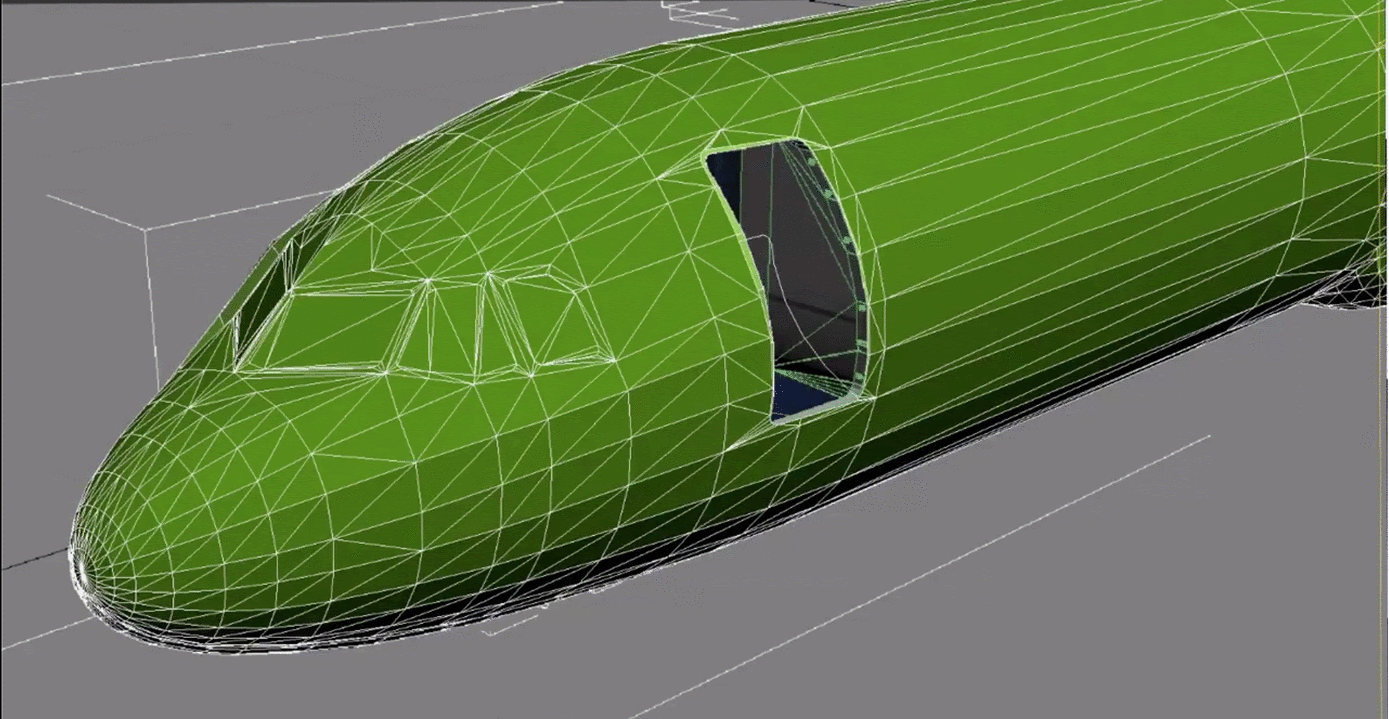
When the group’s A321neo's screenshot was previewed, developers immediately noticed the striking resemblance in the fuselage shape, bearing a close resemblance to the Project Airbus's A321 as well as the wing textures. In a separate incident, another developer reached out to advise SAAD that texturing has as much value as modelling, which was met with a rebuttal claiming that the work uses the Project Airbus A321 as a “background picture” for reference in order to speed up development.
A domino effect began to arise with users immediately putting focus on the A330neo, released not too long ago. “Wasn’t this A330neo released too quickly?”, and shortly after, users went hunting for other A330 add-ons out there. A person was quick to produce a comparison image showing Commercial Level Simulations’ Airbus and that SAAD’s side by side, with perfectly matched fuselage cuts and a distinctive modelling “quirk” present in the CLS A330, also present on the SAAD A330neo. Refer to the below image for the circled section:

It was at this time that the SAAD moderation team was embarking on a PR recovery phase, the A330neo and A321neo were already proven to be a direct fork off the Project Airbus A321 and CLS A330.
The CLS team was informed of the stolen assets, and upon approach for comment, a representative responded that “We’re examining the polygons now and have reached out to our intellectual property attorney. [That’s] all I’m saying right now.”
Igami, who has been closely following the chain of events up to this point, recalled when the A350 was first previewed that a user jokingly mentioning that the modelling is merely a rip-off of the FlightFactor A350, the commenter noted how the mesh retains the same modeling errors that were present on FlightFactor’s aircraft. Driven by this lead, he approached a Threshold writer with a seemingly unlikely theory: that the model is based off the FlightFactor A350, noting the lack of a usable A350 model to steal from over on the Prepar3D community.
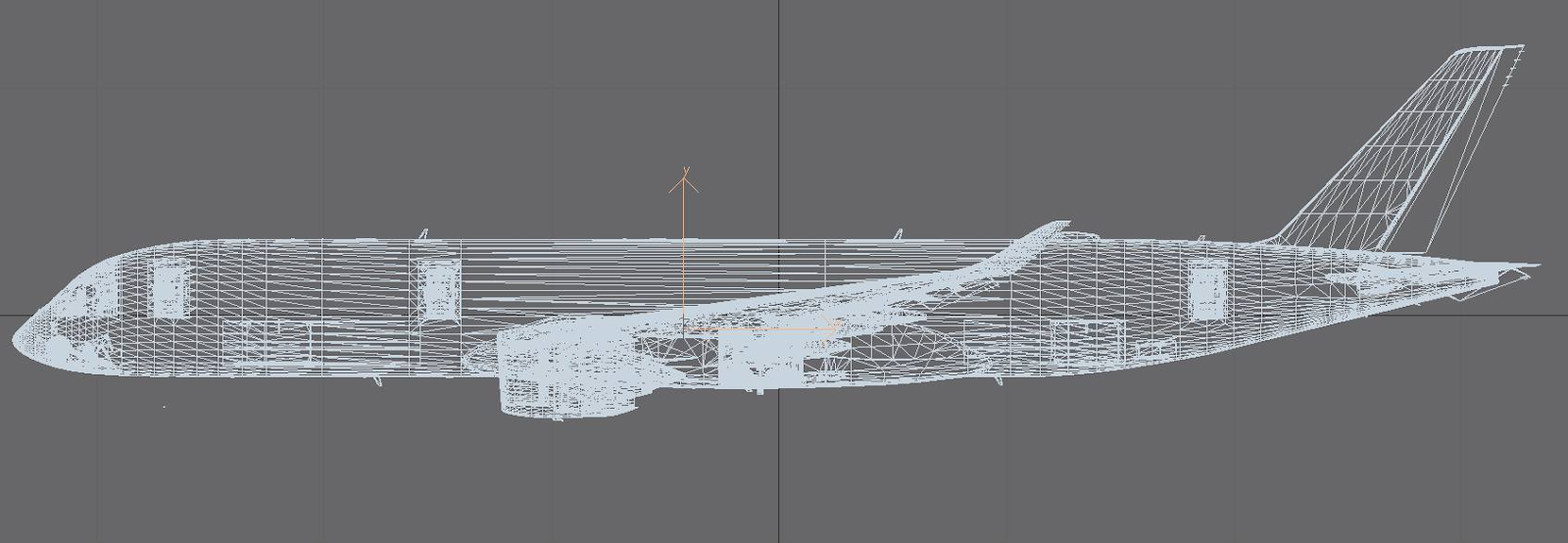
This theory is given more legitimacy when you consider that with X-Plane’s easily accessible object files (‘objs’), it’s possible to extract the mesh from the aircraft without the difficult conversion process often associated with moving from platform to platform.
Upon loading the FlightFactor fuselage object and Aguirre Díaz’s converted A350 ‘mdl’ file (ESP’s model format akin to X-Plane’s .obj), it became clear that this was indeed the case:
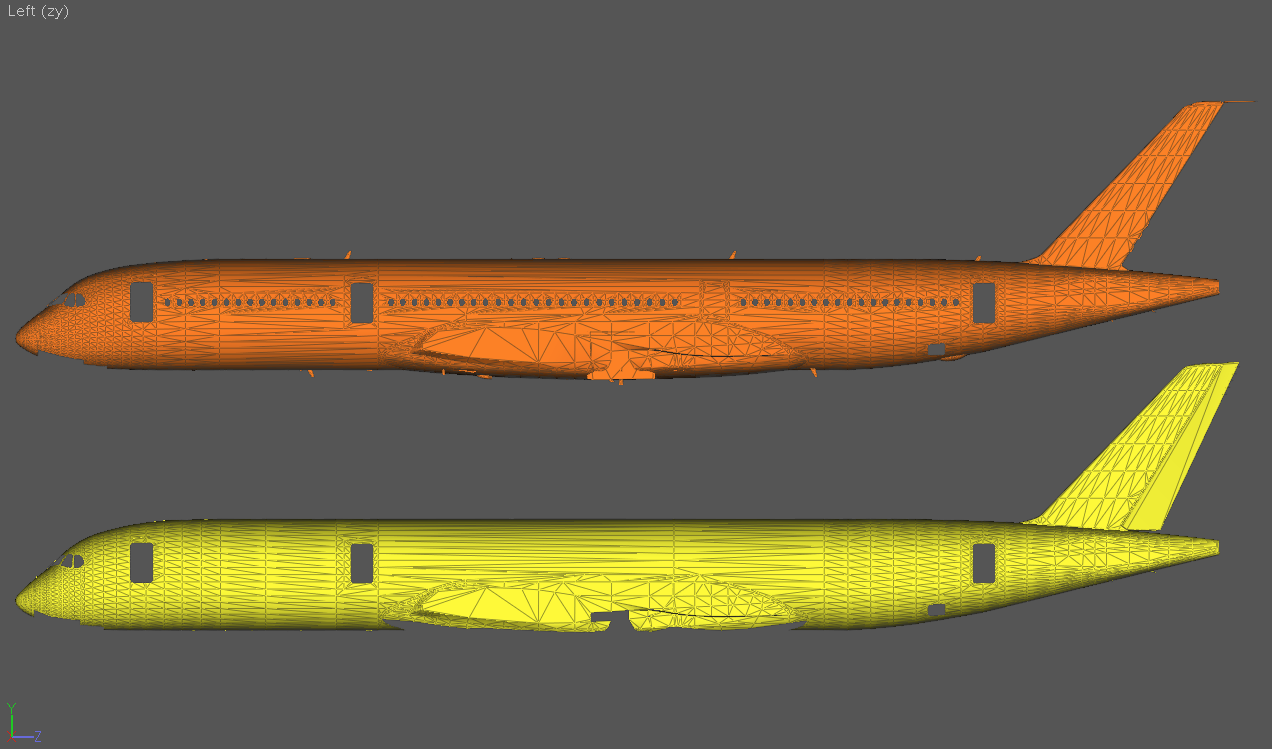
The following wireframe screenshots clearly demonstrate that the Aguirre Díaz has simply made a ‘fork’ off FlightFactor’s model, with slight adjustments to the nose and a few polygon edits to the wingbox. A noticeable example of this are the vertical cuts across the length of the fuselage of the Prepar3D plane, which perfectly align with those present on FlightFactor’s rendition.

One of the most striking modelling anomalies on the SAAD model was the use of the same vertical stabiliser mesh, minimally edited at the trailing edge. On both models, the vertical stabiliser is cut into 6 sections whilst the rudder is a simple triangular extrusion. You can also see the seemingly non-coincidental fuselage cuts on the tail, where every vertical section aligns perfectly:
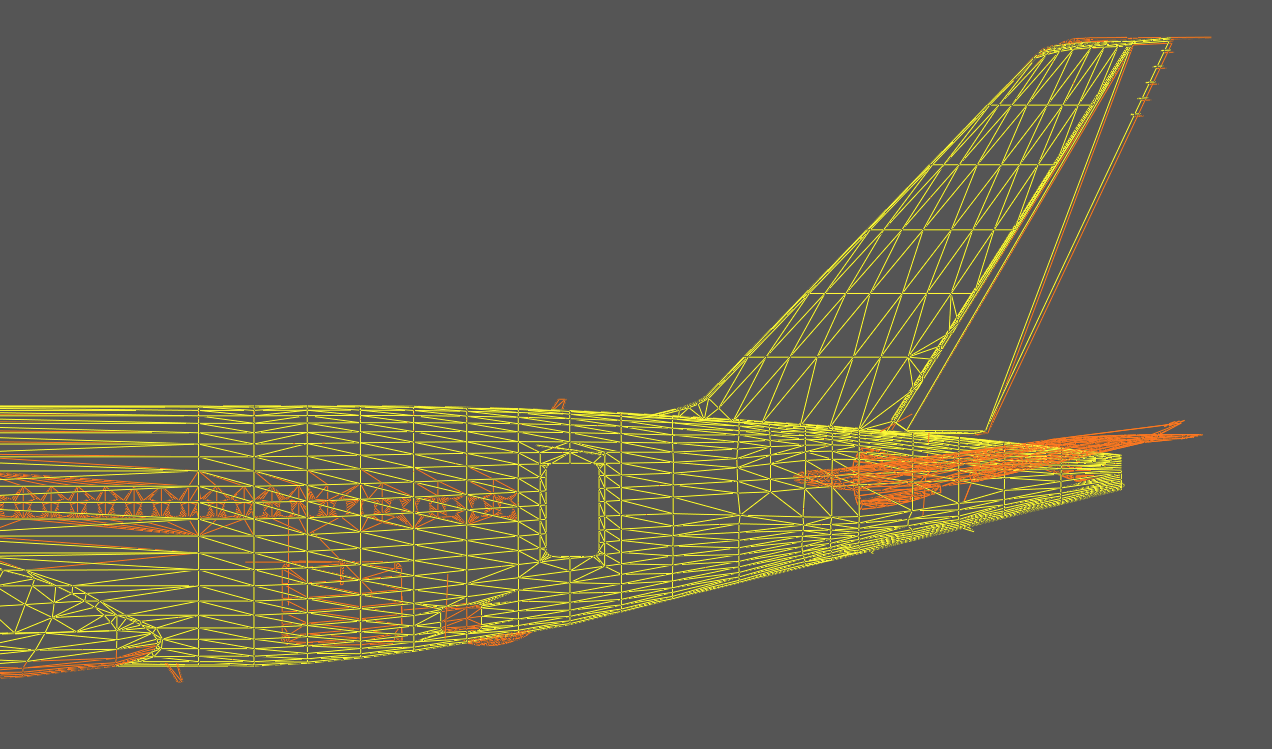
Essentially the entire middle and aft section of the aircraft sits flush with the polygonal arrangement of FlightFactor’s A350. This is demonstrated well when the two fuselage meshes are put together in the same location, most of the surfaces fit perfectly (Top).
A more detailed closeup of the nose reveals that slight adjustments were done to the shape, which otherwise is essentially untouched, save for the removal of 3D-cut passenger windows (Bottom).
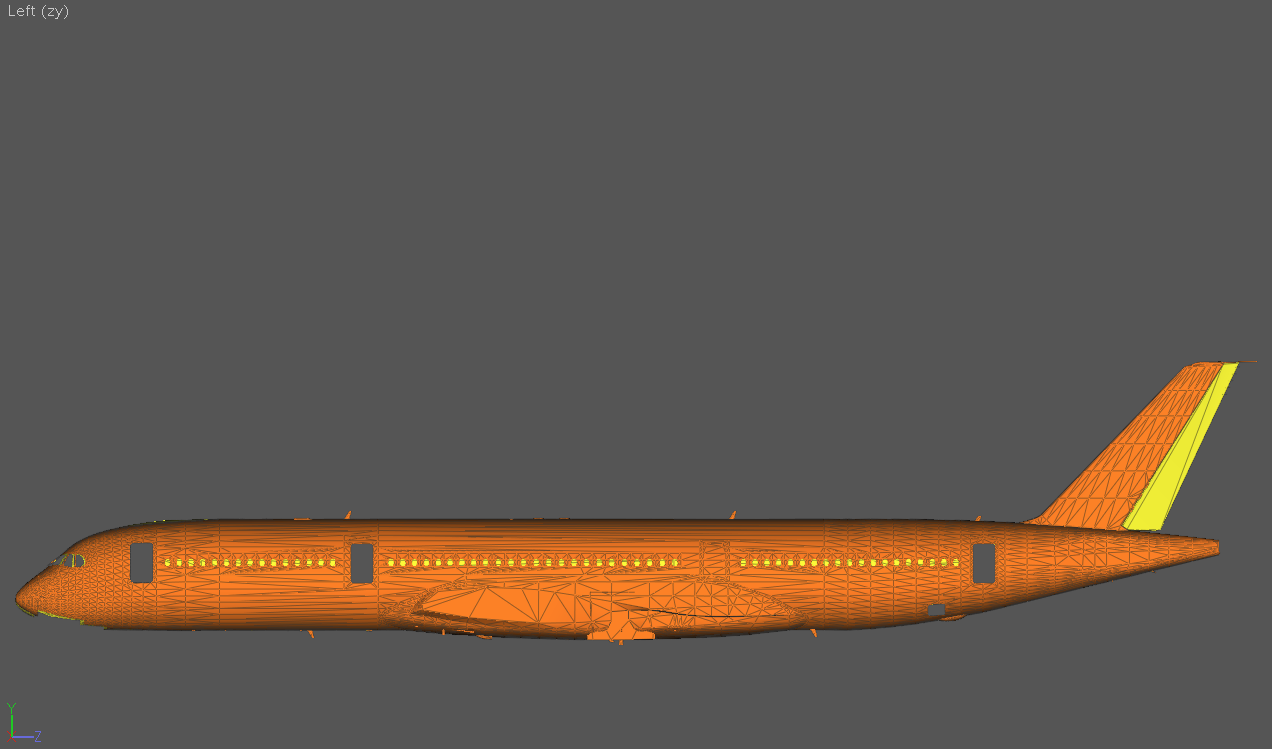
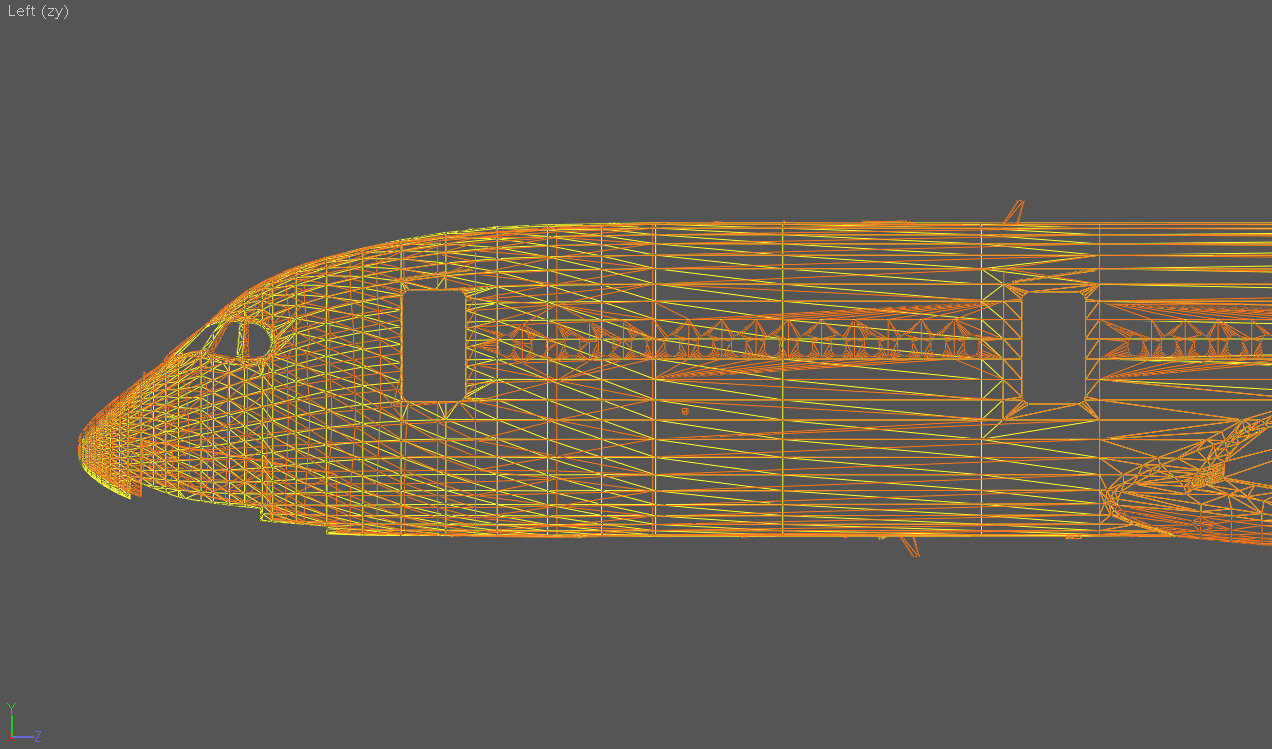
While all this was going on, we contacted FlightFactor to share our findings and to ask whether permission was given to Aguirre Díaz for reuse. Roman from FlightFactor responded: ”No, we did not give permission to anyone. I will look into it, but likely there is nothing I can do.”
In an attempt to receive an official response from the SAAD team, these comparison wireframe shots were posted on their now-defunct Facebook group. User reactions were a mixed bag, with some condemning the actions of the model thief and an equal number attempting to defend Aguirre Díaz and his development brand.
"I am deeply disappointed. Especially since I noticed he used PA A321 models... Anyone who supports this kind of atrocity is an idiot”, says one.
On the flip side, another user wrote - “Can we all take a moment to appreciate all the time and energy Sergio has put in to make these models? ...I don’t care if his A321[neo] was “too similar” to a PA model.”
Some resolved to conclude it’s an attempt to discredit the developer, saying "can we stop with the bashing? it's getting tiresome..." A commenter claiming to work for Flightbeam Studios justified the A350’s modeling similarities by discussing FlightFactor’s apparent inability to “[get] there [sic] A350 working the way it should.”
We were unable to verify his connection to Flightbeam as the group was removed shortly after the comment was posted, when a co-developer made the page hidden from search before the prompt deletion of SAAD’s presence on social media.
SAAD was primarily two developers working together, one of the moderators approached us after the group's deletion to clarify that none of moderators in the group did any modeling or developing.
With the group’s deletion went the only reliable method for downloading all of Sergio A. Aguirre Díaz’s copied models, amid speculation that one of the three developers whose intellectual property was infringed enlisted legal action, though these rumours have not been solidly confirmed. This leaves FlightFactor’s A350 as once again a rightfully X-Plane-exclusive aircraft.
During our travels through SAAD’s Facebook group prior to its deletion, we found this quote which aptly sums up the situation at hand with the A350, A330neo and A321neo: "Saying that mesh lines look the same because two modellers are modelling the same thing is the same as saying two painters drawing a portrait of the same person will have the exact same brush strokes, lines, and colours."
Share this page
More Reads:
COMMENT ADVISORY:
Threshold encourages informed discussion and debate - though this can only happen if all commenters remain civil when voicing their opinions.



